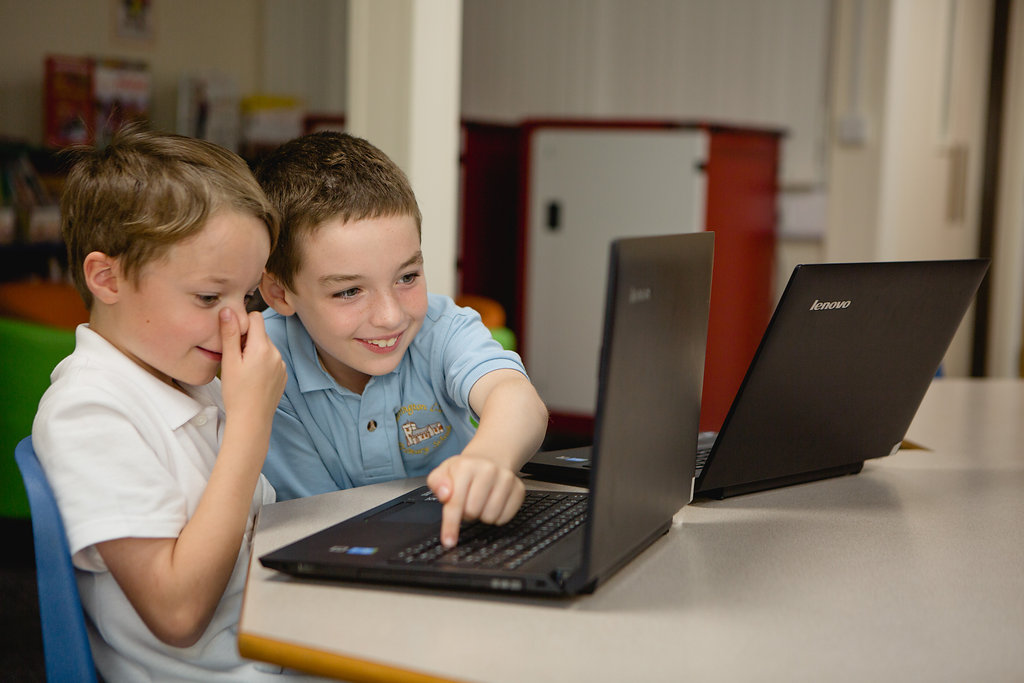Computing
A high-quality computing education equips pupils to use computational thinking and creativity to understand and change the world.

Computing has deep links with mathematics, science and design and technology, and provides insights into both natural and artificial systems. The core of computing is computer science, in which pupils are taught the principles of information and computation, how digital systems work and how to put this knowledge to use through programming.
Building on this knowledge and understanding, pupils are equipped to use information technology to create programs, systems and a range of content. Computing also ensures that pupils become digitally literate – able to use, and express themselves and develop their ideas through, information and communication technology – at a level suitable for the future workplace and as active participants in a digital world.
Intent
Technology is everywhere and evolving all the time. It will play an important part in all of our students' lives, therefore, we want to model and educate our pupils on how to use it positively, responsibly and safely. At Darrington C of E Primary, our broad curriculum encompasses 'computer science', 'digital literacy' and 'information technology', taught through specific lessons and also linked to other areas of the curriculum when appropriate to make the learning creative and accessible.
Teachers use Teach Computing to deliver the National Curriculum and to provide a progression grid that builds on skills, knowledge and vocabulary of Computing. This resource provides a Long Term Plan and sequences of work which the teachers are able to tailor to the needs of the children in their class.
Beginning in EYFS, our pupils explore how technology is used in school and around the home. They learn how to use functions on computers and begin to communicate safely with family online through their learning journals.
At Key Stage 1, our pupils understand what algorithms are and how they are implemented as programs on digital devices. They create programs by giving precise and unambiguous instructions, debug simple programs and use logical reasoning to predict the behaviour of simple programs. Our pupils use technology in a purposeful manner to create, organise, store, manpulate and retrieve digital content. They build on their knowledge of common uses of information technology beyond school and learn how to use technology safely and respectfully.
At Key Stage 2, our pupils are taught to design, write and debug programs that accomplish specific goals, using sequence, selection and repetition in them. Using logical reasoning, they explain how algorithms work and detect and correct errors within them. The children are taught about computer networks and the opportunities they offer for communication and collaboration. They use technology effectively (including for collecting, analysing, evaluating and presenting data and information) and begin to evaluate digital content. Our pupils are taught how to use technology safely, respectfully and responsibly. They recognise acceptable and unacceptable behaviour and identify a range of ways to report concerns about content and contact.
IMplementation
We use greatly value subject specific teaching in Computing and therefore have scheduled weekly timeslots for Computing lessons for KS1 and KS2 classes. The application of the skills learned in Computing lessons can also be seen across the curriculum when the use of the technology enhances learning in that subject. An example of this is using time-lapse photography to observe the growth of a plant over time to enhance understanding in a science lesson.
Subject specific vocabulary is taught explicitly and built on as the children progress through school. Staff follow the progression grids to ensure that pupils are taught the appropriate vocabulary, skills and knowledge and that they are appropriately challenged in their learning.
Each year we support Safer Internet Day and explore the theme in depth across the school. This provides an additional boost to the importance of Internet safety which is covered right from the beginning EYFS to the end of KS2.
Impact
We encourage the children to enjoy and value the curriculum we deliver. We want the learners to discuss, reflect and appreciate the impact computing has on their learning, development and well-being.
The way pupils showcase, share, celebrate and publish their work will best demonstrate the impact of our curriculum. We also look for evidence through reviewing pupils' knowledge and skills digitally and by observing their learning carefully. Learning and understanding is assessed against the National Curriculum statements for Computing and also through ongoing, informal assessment by class teachers to help children make progress in each lesson. This ensures the pitch of lessons is well-matched to need and that, by the end of each key stage, required content within the National Curriculum is adequately covered to prepare pupils for the next phase of their education. Leaders conduct pupil voice interviews with the children to discuss their learning and establish the impact.